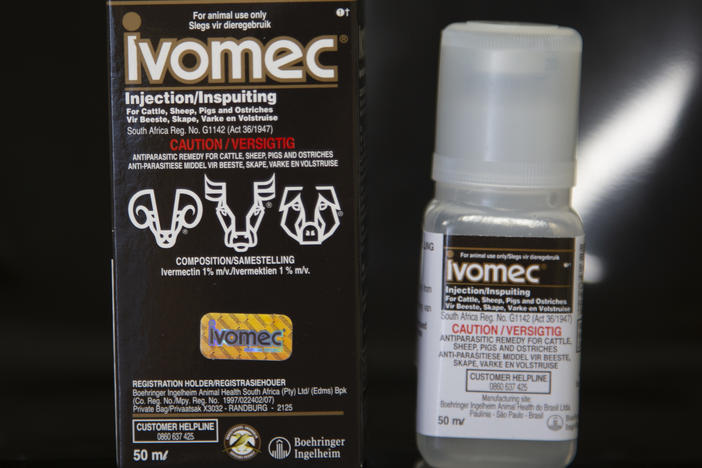Section Branding
Header Content
Minnesota Health Official Says Vaccine Rollout Hasn't Been As Bad As It Seems
Primary Content
Kris Ehresmann of the Minnesota Department of Health says the holidays were a big reason that not as many people were vaccinated as had been planned.
Transcript
AILSA CHANG, HOST:
As the first coronavirus vaccines were rolled out in the U.S. three weeks ago, federal officials anticipated that 20 million people would be vaccinated by the end of 2020. Well, as of today, the CDC says only about 4.5 million people have gotten that first dose. That is a huge gap between promise and delivery.
So to learn more about how this vaccination campaign is going, we called up Kris Ehresmann, who has a close-up view. She's with the Department of Public Health in Minnesota, where more than 82,000 vaccines have been administered so far. And when we talked earlier today, she said Minnesota is making good progress.
KRISTEN EHRESMANN: If you think about the fact that the FDA approved the Pfizer vaccine on December 11, and for instance, in Minnesota, most of our sites did not receive their first vaccine until December 18, and then if you consider the fact that we're using a hub-and-spoke model, which means that we had hub sites who are then redistributing some of that vaccine to other locations, it really meant that vaccine couldn't begin in earnest until the week of December 21. And there have been a couple of holidays in between as well. So I just want to acknowledge that what has been accomplished, I think, both in our state as well as nationally, is quite amazing, all things considered.
CHANG: What are the biggest obstacles to getting people vaccinated in your state? Is it more about logistics or is it more about people's hesitancy to get vaccinated, would you say?
EHRESMANN: Actually, I think it's really more the details of the logistics. So in other words, when you're using a vaccine that has so many considerations - like the Pfizer vaccine, for instance, with the storage and handling, the fact that it's reconstituted and once reconstituted, you have a limited amount of time that you can use that vaccine - you really have to be thoughtful as you begin your vaccination program because you need to make sure that when you start reconstituting vaccine, that you're going to use that vaccine within six hours, and that you have all those people ready to go. So that's one consideration.
Another consideration is the fact that for the federal long-term care pharmacy partnership program, states had to set aside 50% of the total need. So that means, for instance, in Minnesota, that we had to set aside 82,500 doses and have those ready to go, even though they won't all be administered, you know, in the first week of the program.
CHANG: Well, I want to play a little clip now from Moncef Slaoui. He's the chief adviser to Operation Warp Speed. And he talked to CNN this morning.
(SOUNDBITE OF ARCHIVED RECORDING)
MONCEF SLAOUI: We, up to now, have made the strategic decision to work through the states. We went and visited them. We discussed with them. No state's health departments have told us this is the wrong approach. And then they told us where to send the vaccine, and we sent the vaccine where they told us. We are sitting here, ready to help them when they tell us where to help them.
CHANG: It sounds like what he's saying is that the federal government has pretty much done its part already in coordinating vaccine distribution efforts. How do you respond to that?
EHRESMANN: Well, certainly they have provided us with vaccine. And we're very grateful. But there are elements of the process that are not quite as, perhaps, smooth as they're being described. So, in other words, the fact that the vaccine allocation for last week came on New Year's Eve - that's wonderful, and that's vaccine that we will administer, but coming the day before the holiday makes it challenging to really start using that vaccine in earnest.
It's not really a question that the states are not able to provide vaccine. In fact, when we look ahead to the numbers of doses that we need, it's really pure vaccine availability that's going to be really the limiting factor. It's just a function of a bunch of systems starting up right in the middle of the holidays.
CHANG: So the fact that 20 million people have not been vaccinated in the U.S. by the end of 2020, is that a fact that's just sort of a PR problem at this point for the federal government rather than a public health problem?
EHRESMANN: Yeah. I do think actually it's more of a PR problem. You know, one of the big lessons learned - that we learned from H1N1 was to under promise and over deliver. And I feel like we're in a place where there were perhaps promises made of what could be administered. And that was probably not a realistic timeframe.
We are getting vaccine into arms. Our systems are all committed to making sure that people are getting vaccinated. And I think once we're getting the vaccine on a regular basis, that will make a huge difference.
CHANG: Kris Ehresmann is director of the Infectious Disease Epidemiology, Prevention and Control Division at the Minnesota Department of Public Health.
Thank you very much for your time today.
EHRESMANN: You're welcome.
(SOUNDBITE OF BONOBO'S "ANIMALS") Transcript provided by NPR, Copyright NPR.
Bottom Content



